Enhanced Effective Filtering Approach (eEFA) for Improving HSR Network Performance in Smart Grids
Abstract
:1. Introduction
- Issue 1: Duplicating and circulating frames in all the rings, except the destination DANH ring;
- Issue 2: Forwarding unicast frames into all DANH rings; and
- Issue 3: Forwarding unicast frames into all QuadBox rings.
2. Effective Filtering Approach (EFA)
- Filter traffic for nondestination DANH rings by using PL; and
- Filter traffic for passive QuadBox rings by using FQR.
2.1. Filtering Unicast Traffic in DANH Rings
2.2. Filtering Unicast Traffic for QuadBox Rings
2.3. Forwarding Unicast Frames
2.4. Issues in EFA
- It still forwards the first frame to all DANH rings; and
- It uses a control message to discover passive QuadBox rings in both unidirectional and bidirectional communications.
3. Proposed eEFA Approach
- eEFA does not forward unicast frames, including the first sent frame, to nondestination DANH rings; and
- eEFA does not use any control message to detect passive QuadBox rings for bidirectional communications.
3.1. Filtering Unicast Frames in DANH Rings
3.2. Discovering Passive QuadBox Rings
3.2.1. Unidirectional Communication
3.2.2. Bidirectional Communications
3.3. Forwarding Unicast Frames
4. Traffic Performance Analysis
- Unidirectional communication between the source and the destination; and
- Bidirectional communication between the source and the destination.
4.1. Unidirectional Communication
4.1.1. In EFA
4.1.2. In eEFA
4.2. Bidirectional Communication
4.2.1. In EFA
4.2.2. In eEFA
5. Simulations and Discussion
5.1. Simulation Description
5.1.1. Simulation 1: Unidirectional Communication
5.1.2. Simulation 2: Bidirectional Communication
5.2. Results and Discussion
- eEFA filters all HSR frames for nondestination DANH rings, even the first sent frame.
- eEFA does not use any control message to discover passive QuadBox rings for bidirectional communications.
6. Conclusions
Acknowledgments
Author Contributions
Conflicts of Interest
References
- Kim, H.; Kim, K.; Park, S.; Kim, H.; Kim, H. CoSimulating Communication Networks and Electrical System for Performance Evaluation in Smart Grid. Appl. Sci. 2018, 8, 85. [Google Scholar] [CrossRef]
- Zeynal, H.; Eidiani, M.; Yazdanpanah, D. Intelligent Substation Automation Systems for Robust Operation of Smart Grids. In Proceedings of the 2014 IEEE Innovative Smart Grid Technologies—Asia (ISGT Asia), Kuala Lumpur, Malaysia, 20–23 May 2014. [Google Scholar]
- The International Electrotechnical Commission. IEC 61850-1 Standard: “Communication Networks and Systems in Substations—Part 1: Introduction and Overview”; IEC/TR 61850-1; The International Electrotechnical Commission: Geneva, Switzerland, 2003. [Google Scholar]
- The International Electrotechnical Commission. IEC 61850-3 Standard: “Communication Networks and Systems for Power Utility Automation—Part 3: General Requirements”, 2nd ed.; IEC 61850-3; The International Electrotechnical Commission: Geneva, Switzerland, 2010. [Google Scholar]
- The International Electrotechnical Commission. IEC 62439-3 Standard: “Industrial Communications Networks—High Availability Automation Networks—Part 3: Parallel Redundancy Protocol (PRP) and High-Availability Seamless Redundancy (HSR)”, 2nd ed.; IEC 62439-3; The International Electrotechnical Commission: Geneva, Switzerland, 2012. [Google Scholar]
- Tien, N.X.; Nsaif, S.A.; Rhee, J.M. A Comparison of Techniques for Reducing Unicast Traffic in HSR Networks. Energies 2015, 8, 12029–12060. [Google Scholar] [CrossRef]
- Nsaif, S.A.; Rhee, J.M. Improvement of high-availability seamless redundancy HSR traffic performance for smart grid communications. J. Commun. Netw. 2012, 14, 653–661. [Google Scholar] [CrossRef]
- Shin, M.; Joe, I. Performance Improvement for the HSR Ring Protocol with Traffic Control in Smart Grid. In Proceedings of the 2012 Future Generation Information Technology Conference (FGIT), Gangwon, Korea, 16–19 December 2012. [Google Scholar]
- Abdulsalam, I.R.; Rhee, J.M. Improvement of High-Availability Seamless Redundancy (HSR) Unicast Traffic Performance Using Port Locking. In Proceedings of the Fourth World Congress on Software Engineering, Hong Kong, China, 3–4 December 2013. [Google Scholar]
- Altaha, I.R.; Rhee, J.M. Improvement to high-availability seamless redundancy (HSR) unicast traffic performance using a hybrid approach, QRPL. J. Satell. Inf. Commun. 2016, 11, 29–35. [Google Scholar]
- Altaha, I.R.; Rhee, J.M.; Pham, H.A. Improvement of high-availability seamless redundancy (HSR) unicast traffic performance using enhanced port locking (EPL) approach. IEICE Trans. Inf. Syst. 2015, E98-D, 1646–1656. [Google Scholar] [CrossRef]
- Tien, N.X.; Rhee, J.M. FHT: A novel approach for filtering high-availability seamless redundancy (HSR) traffic. Energies 2015, 8, 6249–6274. [Google Scholar] [CrossRef]
- Tien, N.X.; Rhee, J.M.; Park, S.Y. A Combined Approach Effectively Enhancing Traffic Performance for HSR Protocol in Smart Grids. Energies 2017, 10, 1356. [Google Scholar] [CrossRef]
- Nsaif, S.A.; Rhee, J.M. DVP: A novel high-availability seamless redundancy (HSR) protocol traffic-reduction algorithm for a substation automation system network. Energies 2014, 7, 1792–1810. [Google Scholar] [CrossRef]
- Hong, S.; Lim, D.; Joe, I. Extended dual virtual paths algorithm considering the timing requirements of IEC61850 substation message type. IEICE Trans. Inf. Syst. 2016, E99-D, 1563–1575. [Google Scholar] [CrossRef]
- Tien, N.X.; Kim, S.; Rhee, J.M. A novel ring-based dual paths approach for reducing redundant traffic in HSR networks. Comput. Netw. 2016, 110, 338–350. [Google Scholar] [CrossRef]
- Tien, N.X.; Kim, S.; Rhee, J.M.; Park, S.Y. A novel dual separate paths (DSP) algorithm providing fault-tolerant communication for wireless sensor networks. Sensors 2017, 17, 1699. [Google Scholar] [CrossRef] [PubMed]
- Tien, N.X.; Rhee, J.M. Developing a new HSR switching node (SwitchBox) for improving traffic performance in HSR networks. Energies 2016, 9, 36. [Google Scholar] [CrossRef]
- Molina, E.; Jacob, E.; Toledo, N.; Astarloa, A. Performance enhancement of high-availability seamless redundancy (HSR) networks using OpenFlow. IEEE Commun. Lett. 2015, 20, 364–367. [Google Scholar] [CrossRef]
- Nsaif, S.A.; Rhee, J.M. RMT: A novel algorithm for reducing multicast traffic in HSR protocol networks. J. Commun. Netw. 2016, 18, 123–131. [Google Scholar] [CrossRef]
- Allawi, Y.M.; Lee, D.; Lee, K.; Rhee, J.K. Cost-Effective Topology Design for HSR Resilient Mesh Networks. J. Opt. Commun. Netw. 2015, 7, 8–20. [Google Scholar] [CrossRef]
- Ngo, H.D.; Yang, H.S. Latency and Traffic Reduction for Process-Level Network in Smart Substation Based on High-Availability Seamless Redundancy. IEEE Trans. Ind. Electron. 2016, 63, 2181–2189. [Google Scholar] [CrossRef]
- OMNeT++ v4.6 Discrete Event Simulator. Available online: http://www.omnetpp.org/ (accessed on 30 December 2017).
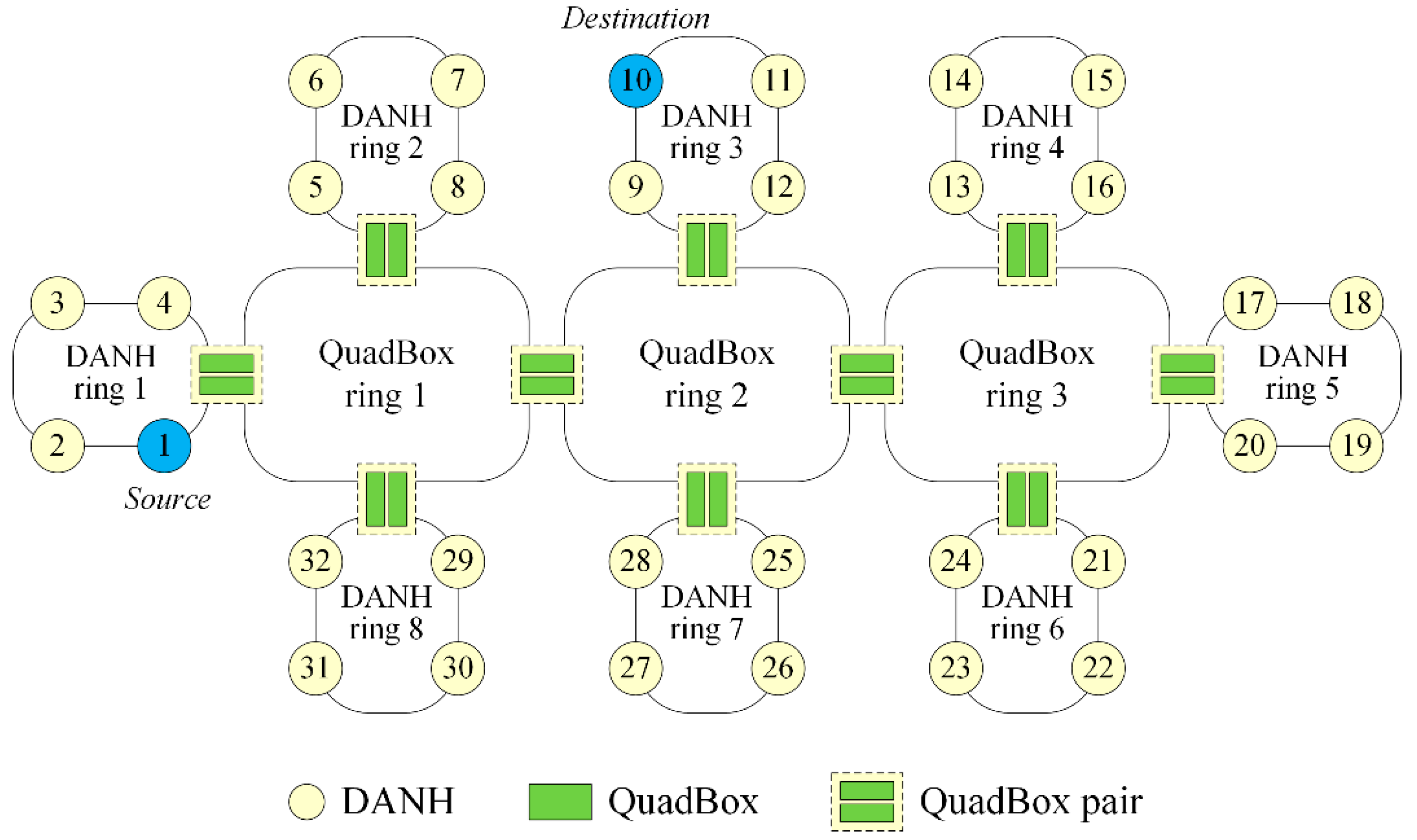
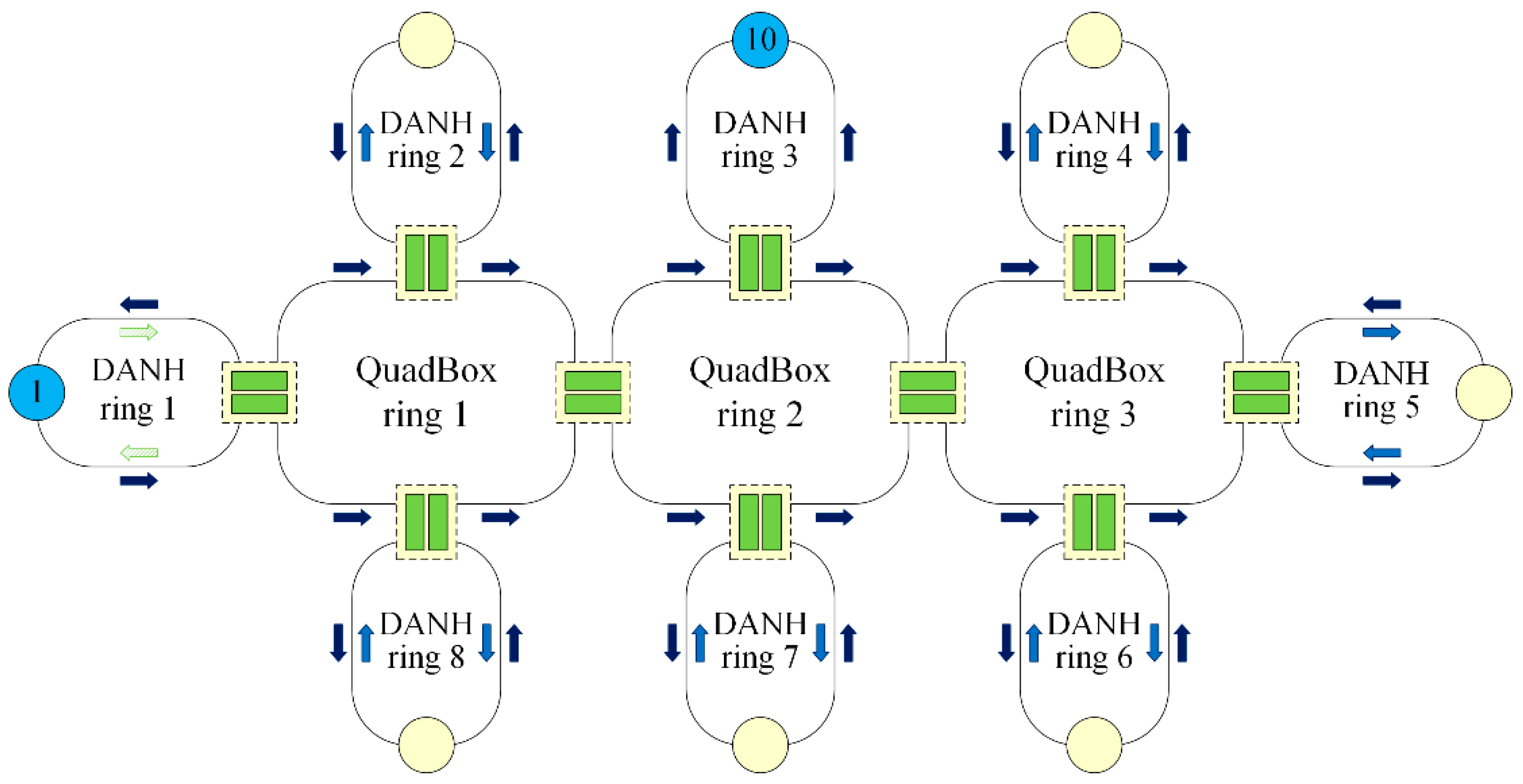
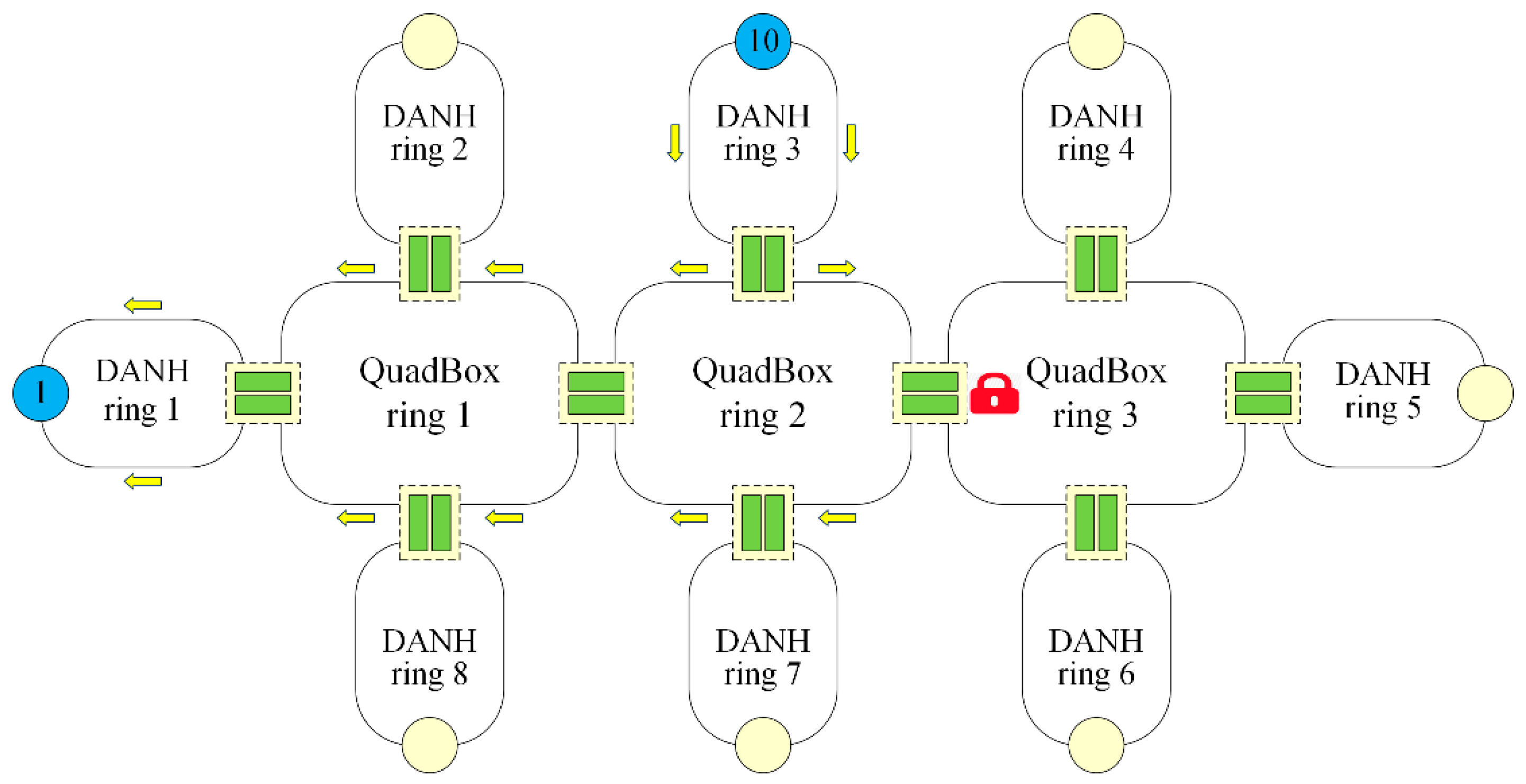
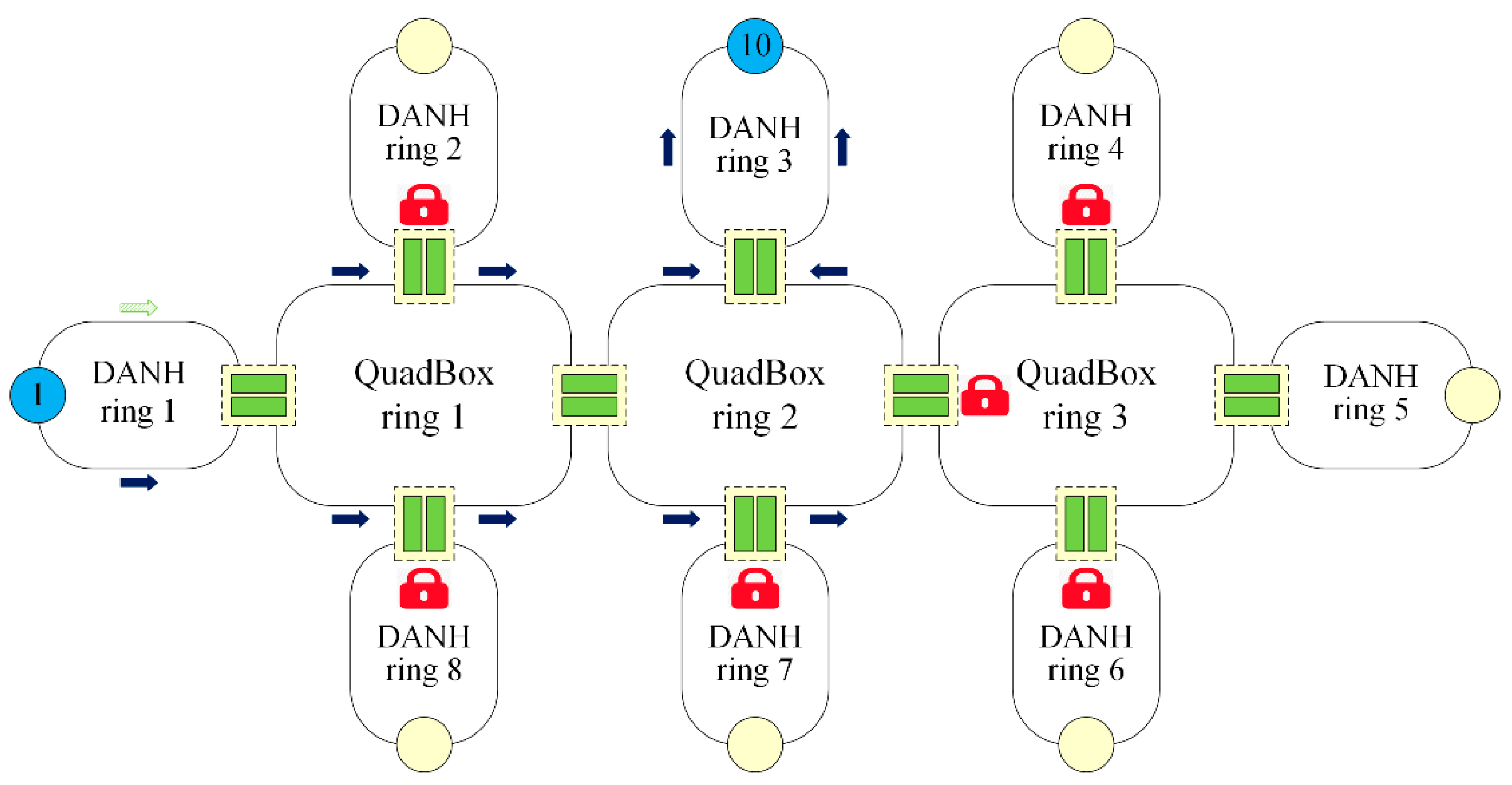
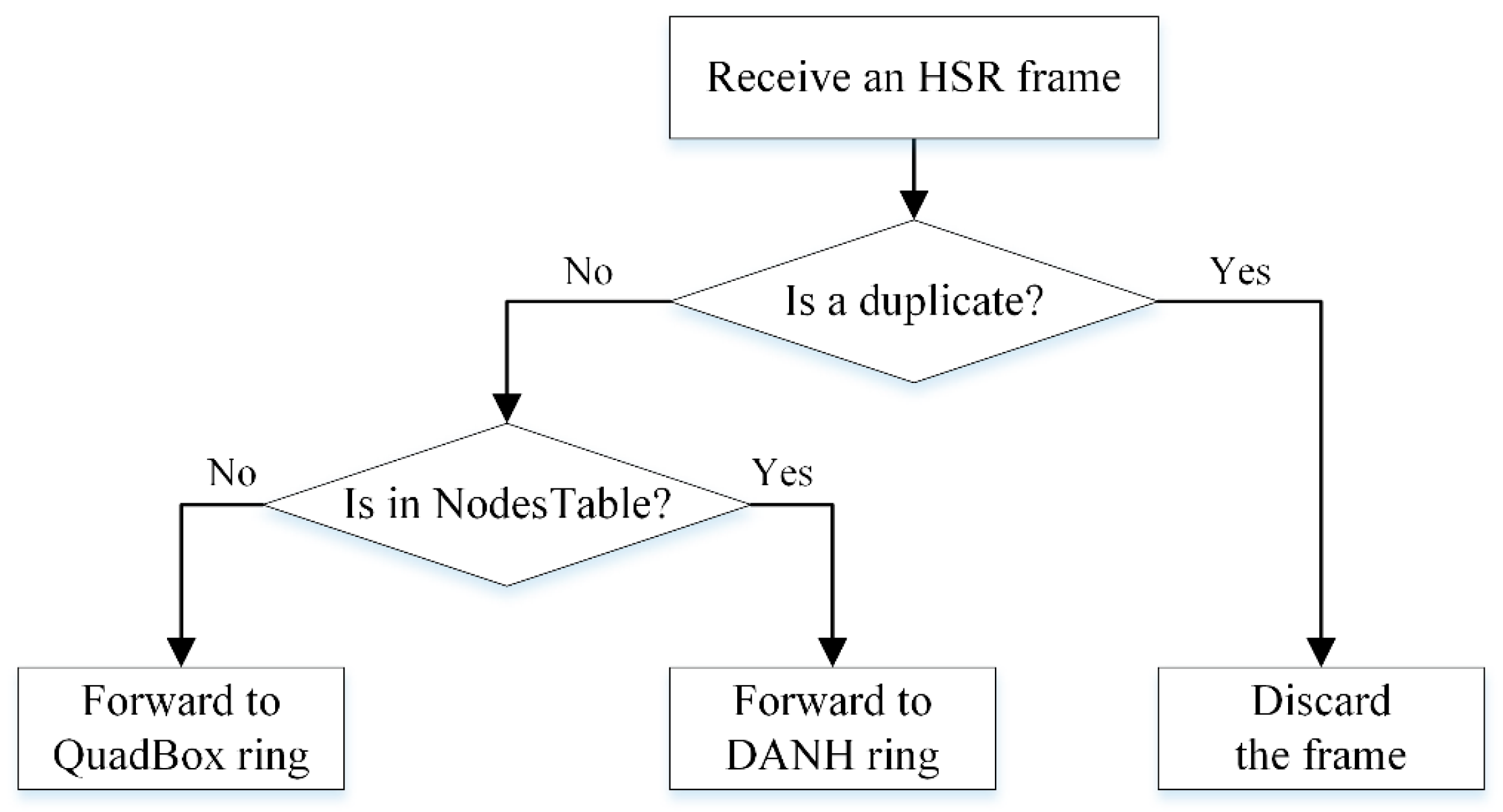

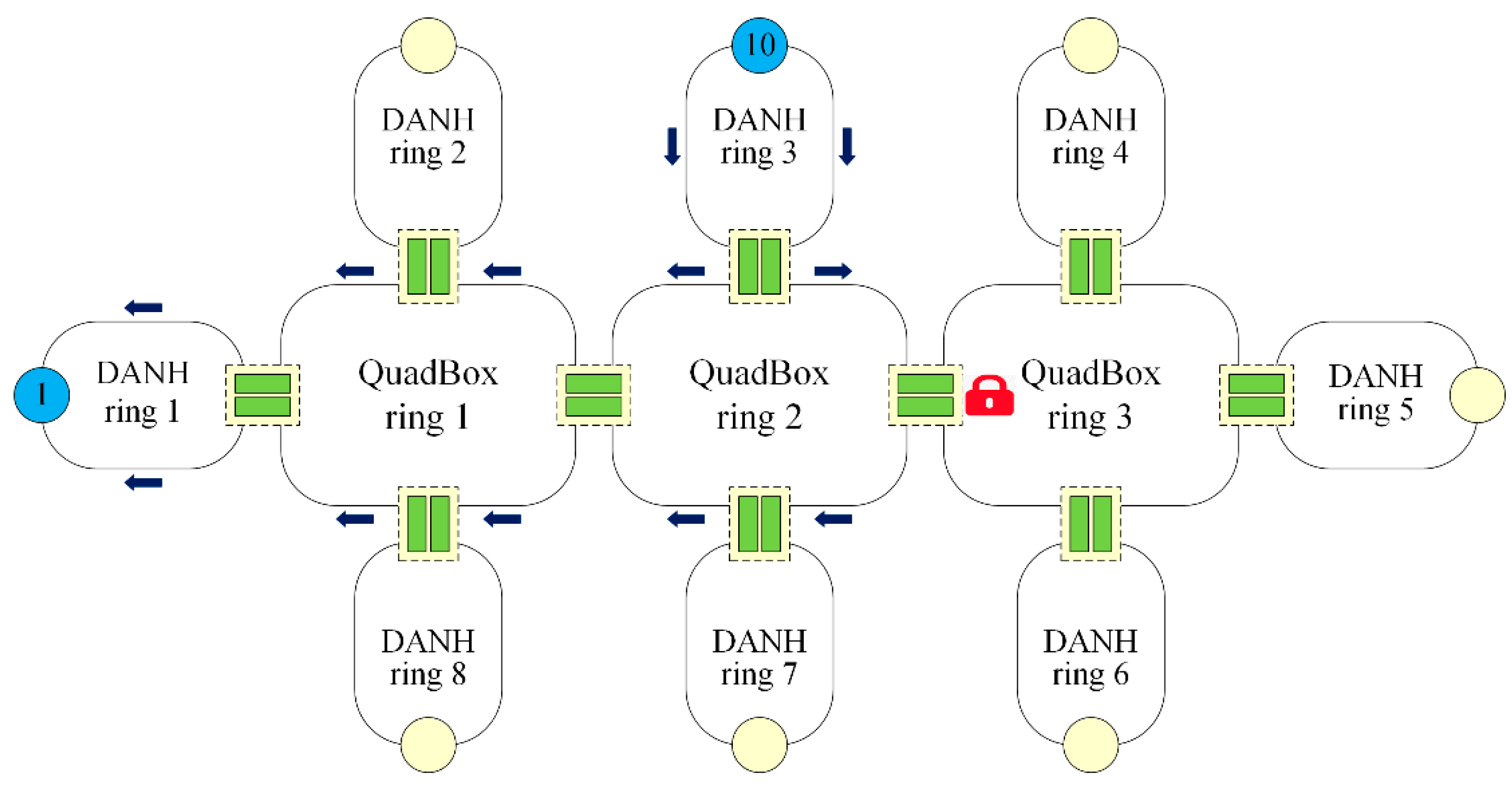
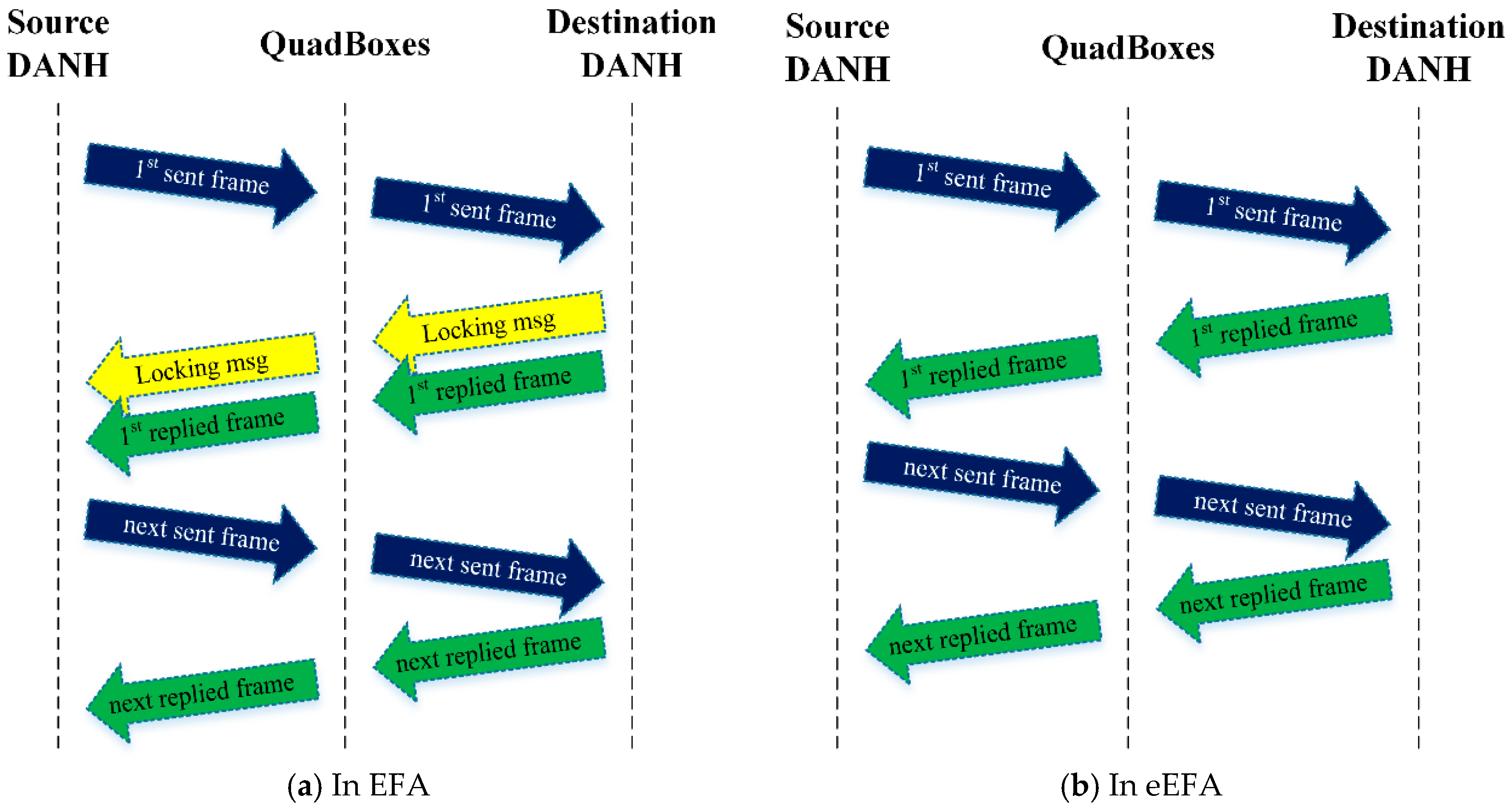
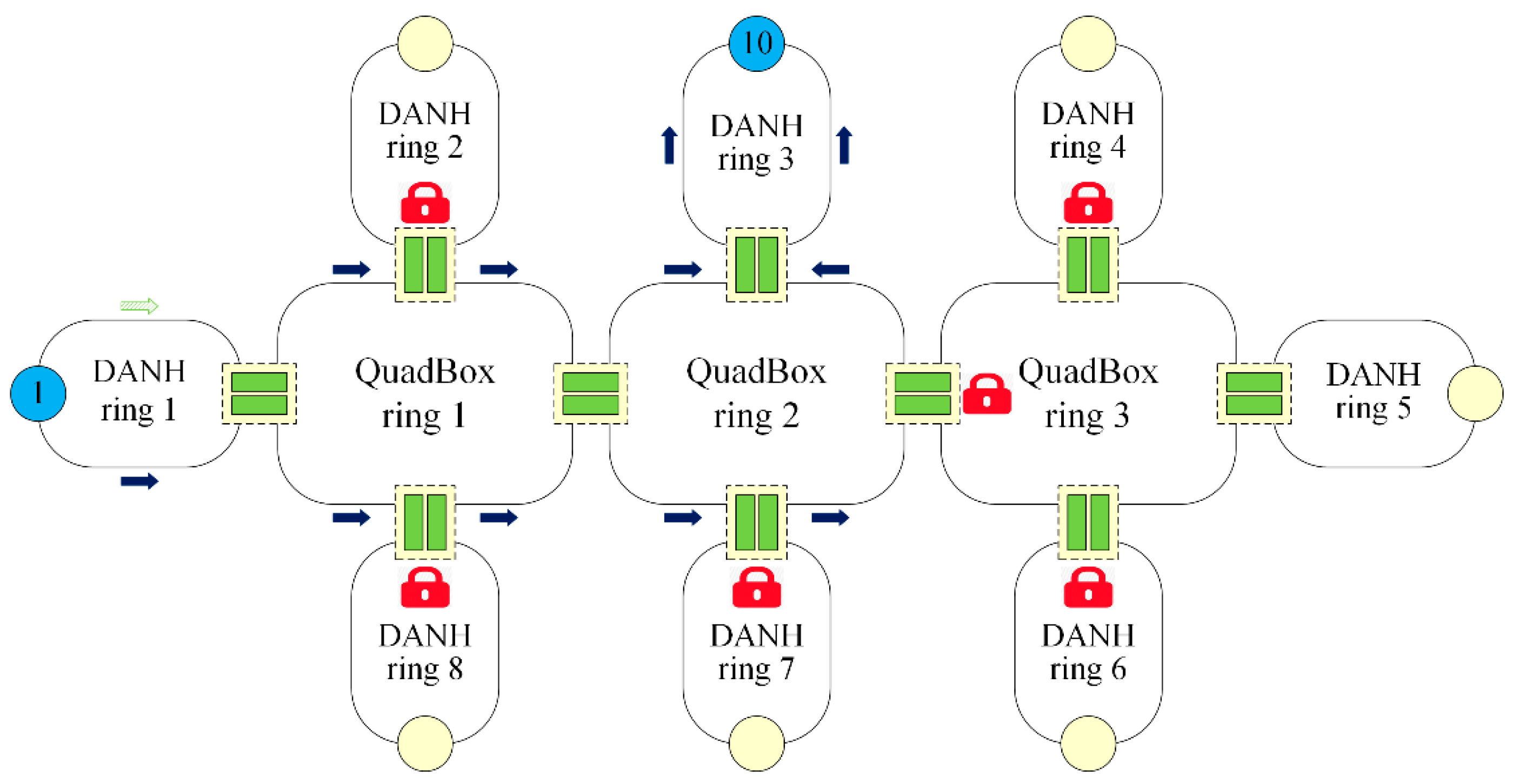
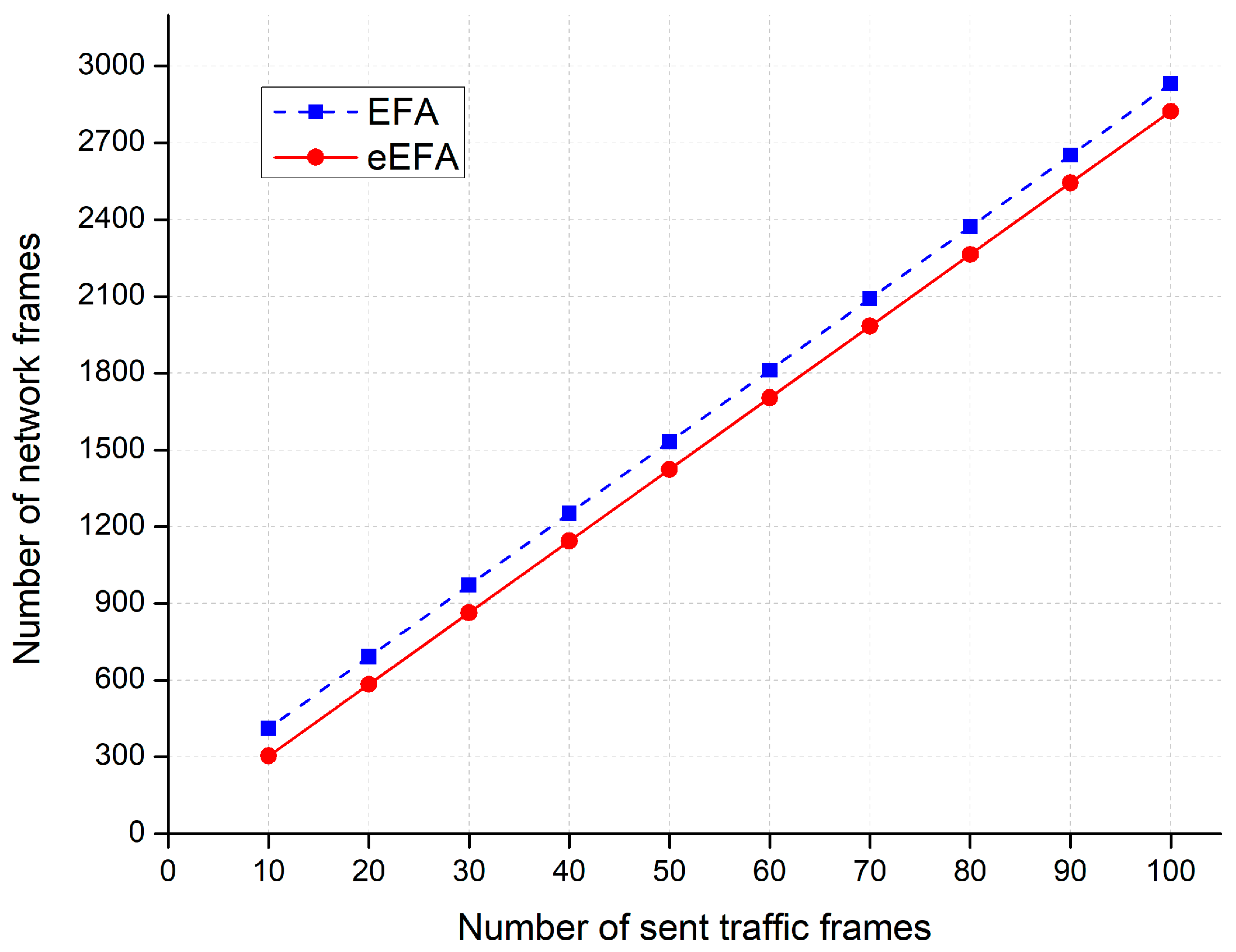

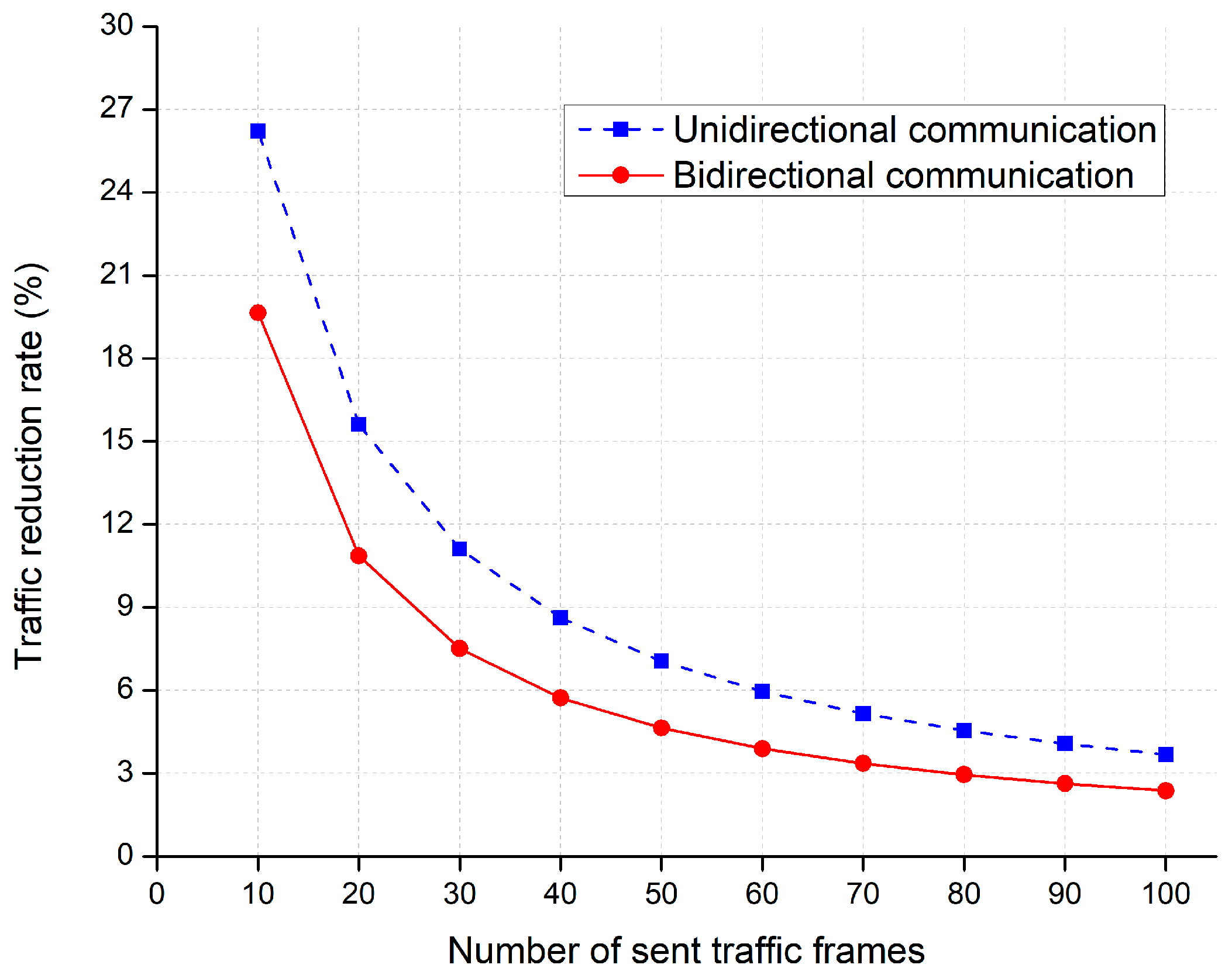
© 2018 by the authors. Licensee MDPI, Basel, Switzerland. This article is an open access article distributed under the terms and conditions of the Creative Commons Attribution (CC BY) license (http://creativecommons.org/licenses/by/4.0/).
Share and Cite
Tien, N.X.; Rhee, J.M.; Park, S.Y. Enhanced Effective Filtering Approach (eEFA) for Improving HSR Network Performance in Smart Grids. Appl. Sci. 2018, 8, 154. https://doi.org/10.3390/app8020154
Tien NX, Rhee JM, Park SY. Enhanced Effective Filtering Approach (eEFA) for Improving HSR Network Performance in Smart Grids. Applied Sciences. 2018; 8(2):154. https://doi.org/10.3390/app8020154
Chicago/Turabian StyleTien, Nguyen Xuan, Jong Myung Rhee, and Sang Yoon Park. 2018. "Enhanced Effective Filtering Approach (eEFA) for Improving HSR Network Performance in Smart Grids" Applied Sciences 8, no. 2: 154. https://doi.org/10.3390/app8020154




